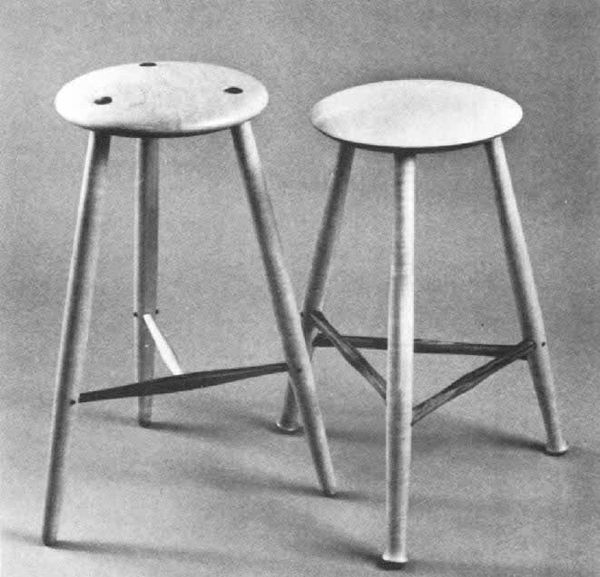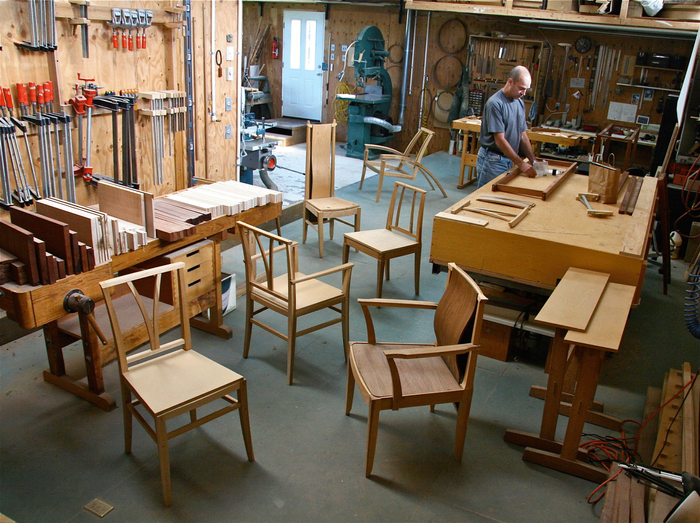The Three-Legged Stool
In this classic from the Fine Woodworking archive, David Scott explains how to turn a stool on the lathe.

Synopsis: For a turner, a stool may serve as an introduction to joinery and a chance to go beyond the usual turned work. The variations on a three-legged stool seem endless, and this and a related article cover a few types. Here, David W. Scott weighs the design of the stool based on appearance, the intended use of the stool, and user leg length. He explains how he makes the seat, legs, and rungs, using shouldered, round tenons to add strength to the rung joints. Jim Cummins talks about how Ron Curtis makes “free-form construction with sound joinery” with lots of angles.
The three-legged stool is the essence of casual furniture, good for a brief perch in the kitchen or shop or for a longer sit when the body is leaning forward and partly supported by a desk or counter. For a turner, the stool may serve as an introduction to joinery and a chance to go beyond the usual turned work.
The idea of individual turnings coming together to form a finished piece of furniture is fascinating. Building furniture and doing production lathe work in a small shop, I have long been intrigued with the structure of the three-legged stool— the variations on its simple theme seem endless. Free-form slab seats in the style of Wharton Esherick (FWW #19, pp. 50-57), seats that are turned and then carved, other rung configurations and legs at other angles, even different angles in the same stool, all open up new design possibilities.
I make stools between 25 in. and 28 in. high, a good size for general use. A 25-in. stool with legs angled at 78° has feet about 17 in. apart—graceful and stable in appearance and in use. I determine the placement of the rungs according to appearance, intended use of the stool, and the user’s leg length. If the rungs are too low, the stool looks clumsy; if too high, it begins to look storky. Two-rung stools, like one of those in the photo at right, have the rungs’ mortises all at the same height from the floor. Three-rung stools have rungs staggered in height 1 in. to 1 3/4-in. so as not to weaken the legs. In order to be able to choose the rung heights and lengths for each stool individually, I turn the seat first and then the legs. The legs join the underside of the seat in 1-in. diameter holes about 4 in. to 5 in. from the seat center. I mark and drill the holes in the legs for the rungs, test-assemble the legs and seat without glue, and measure the lengths of the rungs. Then I turn and finish the rungs, take care of details and glue the pieces together.
Making the seat
Usually, I turn the seat from 6/4 or 8/4 stock, 12 in. to 14 in. in diameter, mounted inboard on a Glaser center-screw chuck on the lathe (FWW #25, pp. 84- 85). I bought the chuck, which lets me mount and unmount the seat blank quickly and precisely, for $70 from Turnmaster Corp., 11665 Coley River Circle, Fountain Valley, Calif. 92708. My preference is seats made all from one board, but seats glued up to get that width look fine too. First I drill the hole for the center screw on the seat-blank underside, then, using a protractor, I mark three lines radiating out from the center at 120° intervals.
For the full article, download the PDF below:
From Fine Woodworking #36
Fine Woodworking Recommended Products

Stanley Powerlock 16-ft. tape measure

Circle Guide

Sketchup Class







Log in or create an account to post a comment.
Sign up Log in